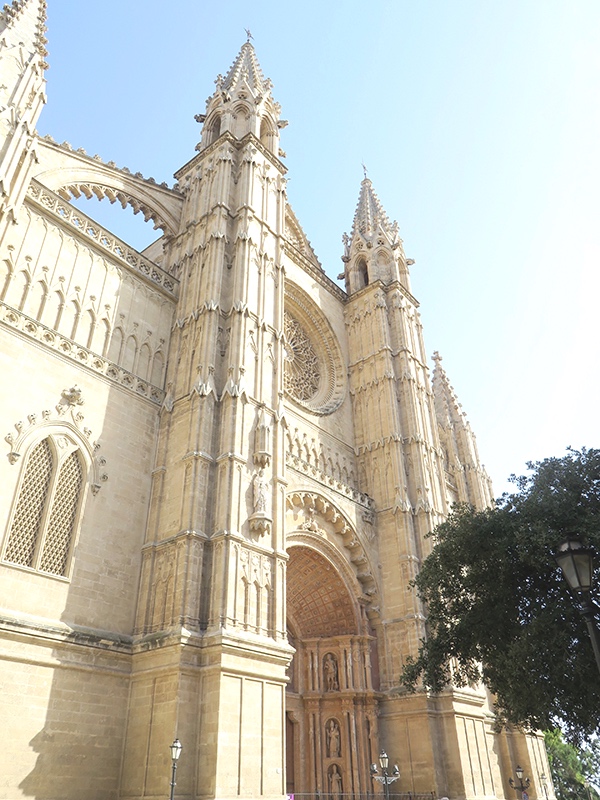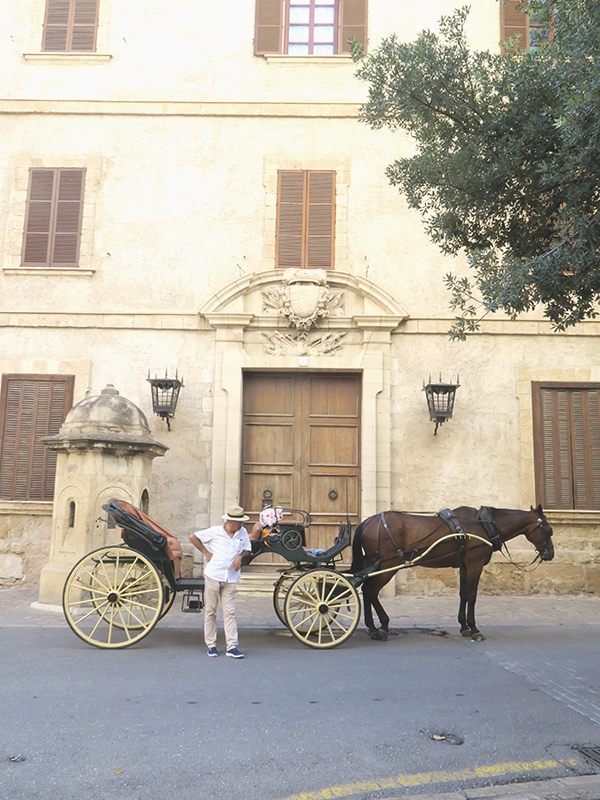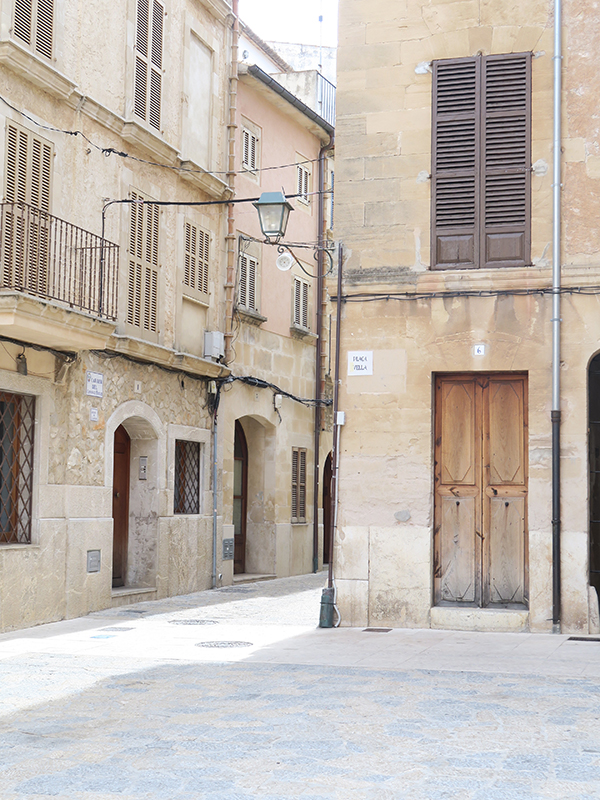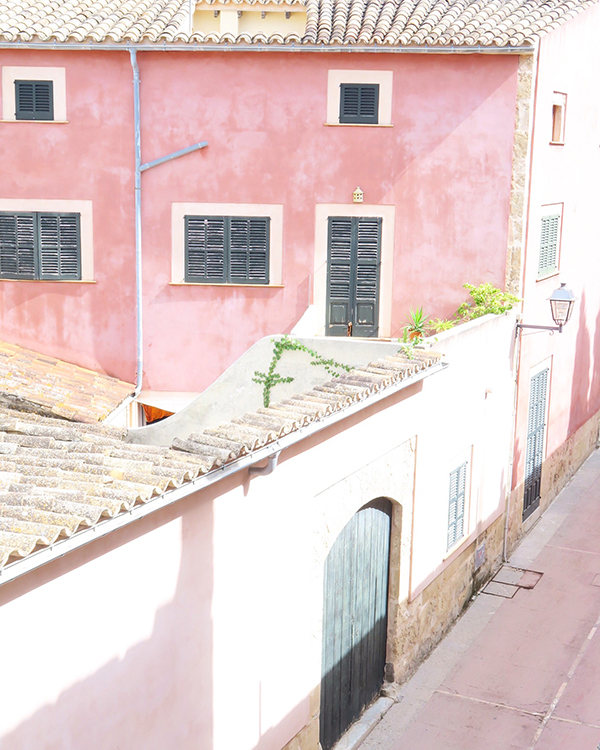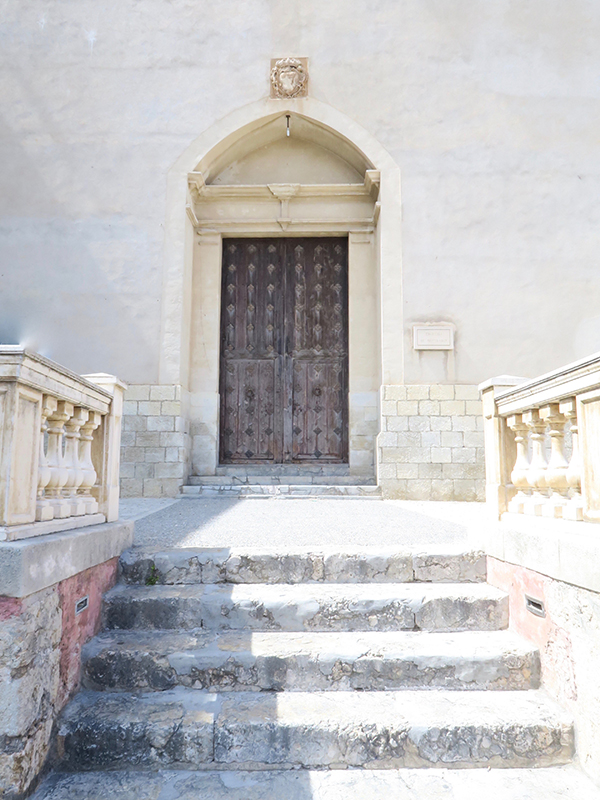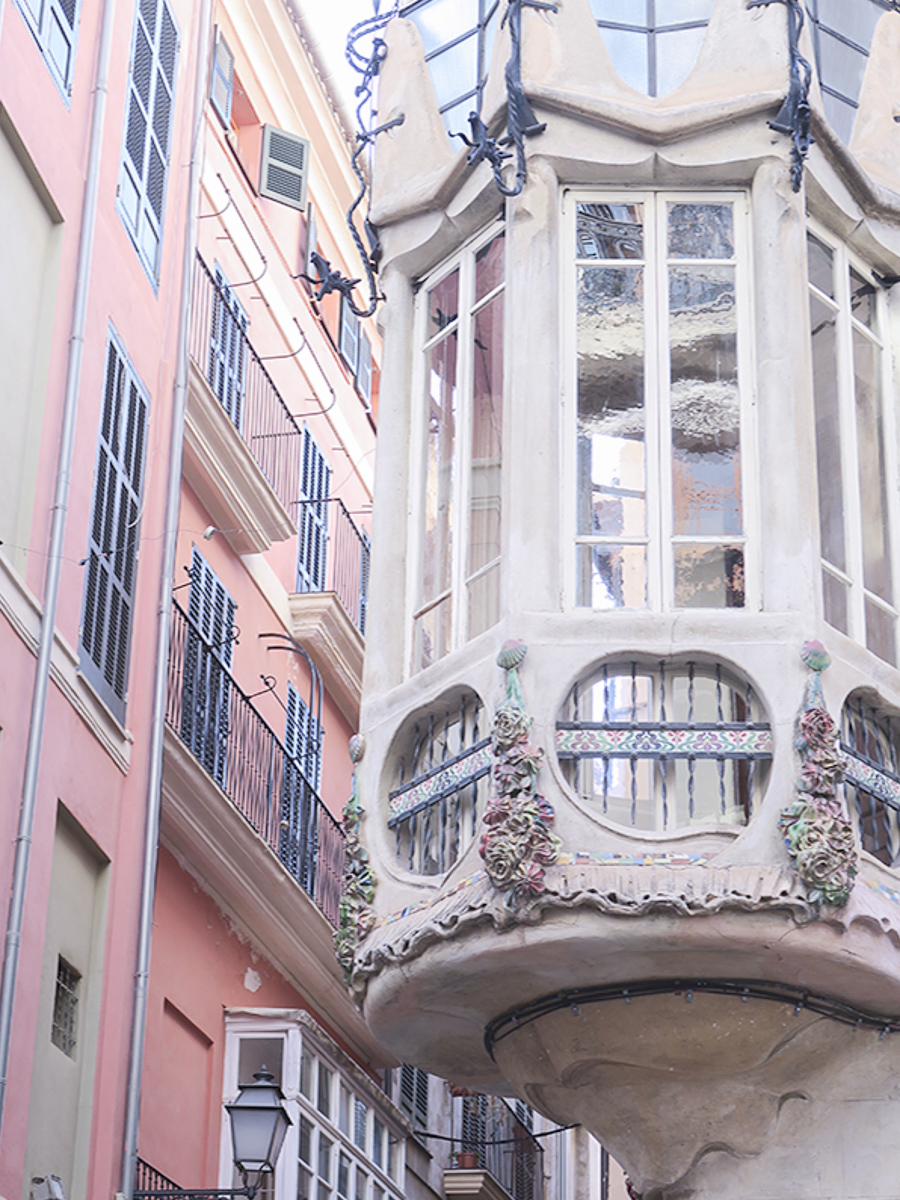The Spanish island of Mallorca feeds your wanderlust with vivid visions of the past as well as sparkling sea moments in the here and now.
True, southern Mallorca can be over crowded and over touristic, especially in August. But take the main highway north to parts less frequented and you will find a peaceful paradise of tradition and slow living. Spending a day or two in Palma de Mallorca is not a bad idea, if only to take in the magnificent Cathedral of Santa Maria of Palma, locally known as La Seu. Begun in 1229, its nave is the highest of all Gothic cathedrals, higher even than Notre Dame de Paris. Mallorca’s strategic location along the ideological rift between Christianity and Islam, Carthaginians and Romans, North and South means that it has a tumultuous history of siege and warfare. The construction of the cathedral is a testament to this upheaval and was not completed until 1601.
Palma de Mallorca has its roots in the Roman era and was one of two sites established in the second century. The other Roman town of Pollentia is on the north side of the island where today, the living is good. The modern town of Pollenca is a few kilometers west of the old Roman site. When I say modern, let’s put that in it’s proper perspective. Its quaint historic center is a jumble of baroque churches, tiny lanes and ancient courtyards. There’s still a good deal of old world goodness and crumbly walls, but Pollenca is definitely a vibrant town full of life with old buildings updated with sleek modern interiors. Don’t sleep on Gelats Valls if gelato is one of your four main food groups. There are weekly markets in the town square, a myriad of shops and local restaurants and a sunny ambiance that is both lively and relaxing.
The town of Alcudia is a small but rich hundred-layer cake of history. Nearby the ancient Roman settlement of Pollentia, it was founded in the early medieval period and is semi-enclosed with impressive medieval defensive walls. Walking the ramparts is definitely a thing and gives you a good overview of what’s going on. There’s a still active bullring that evokes Hemingway-esque sentiments and its shaded patio is a nice place to have a cool drink on a hot day. Inside the city walls you will find immaculate lanes lined with restrained facades brightened with flowerpots, squares bustling with boutique hotels and small restaurants. Try the patio of L’arco restaurant for delicious tapas and local beer in a quiet square off the main tourist area. If you’re an ancient history lover, bring an umbrella to shield you from the sun and have look around the archeological site of Pollentia. Don’t expect imposing colonnades or temples, but do expect to be impressed by the sheer size of the settlement.
When to go
May, June and early July are good, while September is ideal. August, like so many Mediterranean islands is crazy. In fact, the Palma de Mallorca airport is the busiest airport in Europe in August. If you have to go in August, be advised to stay on the northern coast.
WHERE TO STAY
There is so much to enjoy on this large island that I recommend staying two weeks, renting a car and a house.
If you’ve just got a few days with your love, check out the Hoposa Niu boutique hotel in Cala San Vincent. If you like grand old hotels with all the trimmings try the Hotel Formentor, again on the north coast. I also like the Hotel Ca’n Bonico, a small historic hotel within striking distance of all the best southern beaches.
Pollenca is surrounded by lovely farmland and sprawling farmsteads, hedged with soaring mountain to the west and a string of white sand beaches to the north. There are numerous vacation rentals around here, and it is still possible to find rustic stone houses brimming with character yet tempered with modern comforts. Travellur has done exhaustive research on this topic and can recommend the best ones for you and your family or group of simple life friends. The adjacent seaside town of Porto de Pollenca is busy and kitschy, and should be avoided if possible. However, if boating is your thing, this is where you can find your private charter or public day trip to enjoy the Bay of Pollenca.
There are several wineries in this area that offer wine tasting and are a great place to stock up for the week. Local wine is surprising good and a good deal too!
Cala San Vincent is a series of small coves with sandy beaches and a laid-back seaside atmosphere on the northwestern corner of the island. I found myself returning often to this tiny community of small hotels, authentic restaurants and crystal clear water. For the best Mallorca seafood, get a table overlooking the sea at Ca’l Patro, but be sure to book well in advance. It’s not fancy, but the food is excellent and it’s the most respected kitchen in the area.
There’s a fantastic vintage train that runs from Palma de Mallorca to the seaside village of Deia. It’s a perfect day trip in either direction. Deia lies on rocky west coast on a steep incline leading to a small cove still active with traditional fishing boats. If you’re going for lunch, be sure to go to Ca’s Patro March, rustic and right on the water with mouthwatering specialties and the best view of the cove. There are a number of high-end rentals and upscale eateries for such a small town which affords a wonderful mix of authentic and luxury. It’s one of those special places with indescribable appeal which explains why it is popular with expats, artists and writers.
A string of glittering beaches graces the south coast that are a must see unless you are visiting in August. These “cala” are fingers of sea with a sandy beach at the tip. These are the beaches you see on the tourist brochures with grey rocks above brilliant turquoise water. Cala Mondrago is large and unspoiled but has discreet facilities and its shallow end is perfect for young children. Calo des Moro is the kind of beach I love; small, pristine and undeveloped. You’ll have to navigate down a steep path, but the unbelievably clear water and snorkeling is so very worth it!
WE GOT THIS
Travellur has done all the research to make your trip to this enchanting island the best it can be. Why not give yourself a break and leave the hard stuff to us?
There is so much to do on this island; I can’t do it justice in this brief blog. Forgive me if I skimp on details in order to share main points of interest I don’t want you to miss. To get a custom itinerary, curated accommodation options and further details on exactly the thing for you, consider Travellur’s custom travel service.
You’ll probably save more than you spend and have the peace of mind of being in the right place at all times. Click here for a free consultation.

